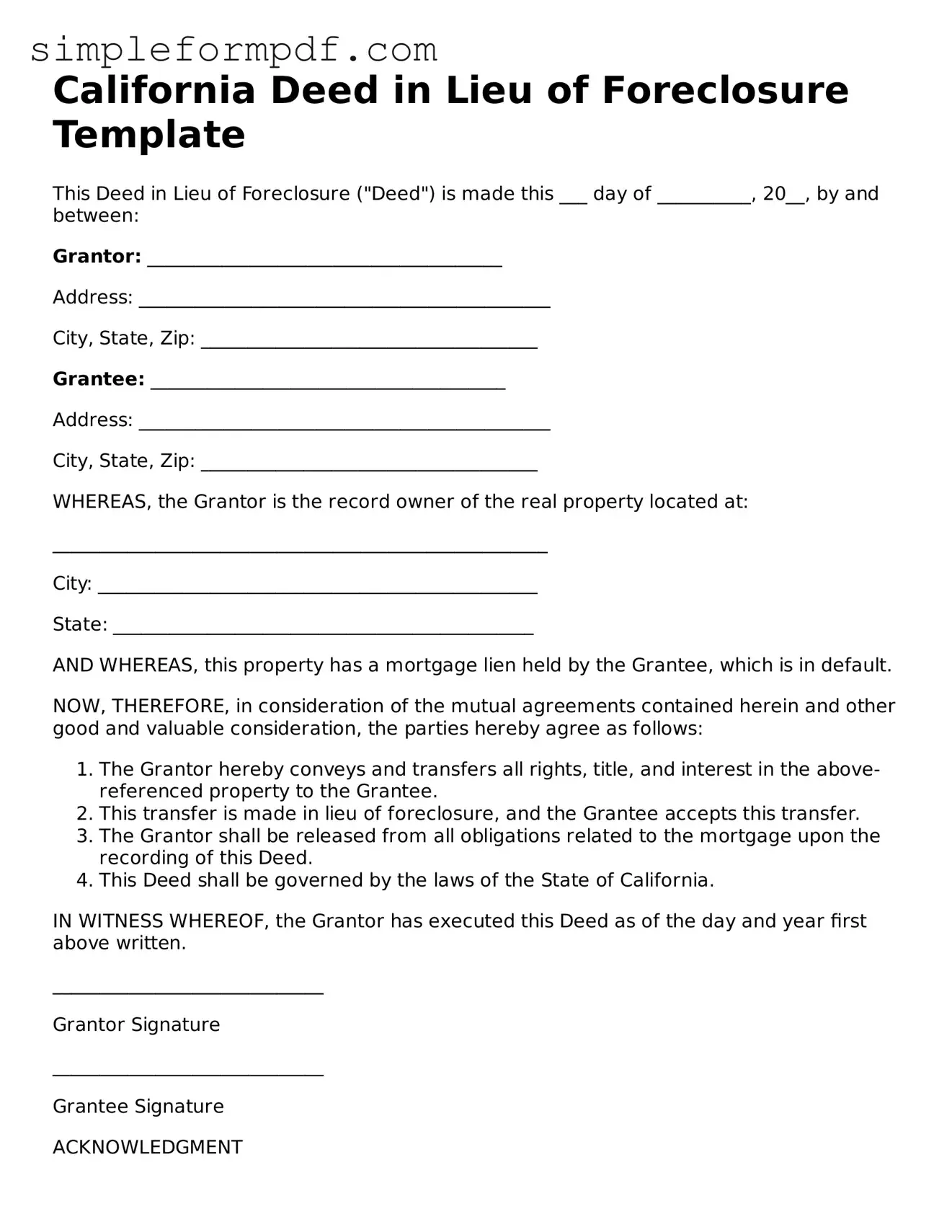California Deed in Lieu of Foreclosure Template
This Deed in Lieu of Foreclosure ("Deed") is made this ___ day of __________, 20__, by and between:
Grantor: ______________________________________
Address: ____________________________________________
City, State, Zip: ____________________________________
Grantee: ______________________________________
Address: ____________________________________________
City, State, Zip: ____________________________________
WHEREAS, the Grantor is the record owner of the real property located at:
_____________________________________________________
City: _______________________________________________
State: _____________________________________________
AND WHEREAS, this property has a mortgage lien held by the Grantee, which is in default.
NOW, THEREFORE, in consideration of the mutual agreements contained herein and other good and valuable consideration, the parties hereby agree as follows:
- The Grantor hereby conveys and transfers all rights, title, and interest in the above-referenced property to the Grantee.
- This transfer is made in lieu of foreclosure, and the Grantee accepts this transfer.
- The Grantor shall be released from all obligations related to the mortgage upon the recording of this Deed.
- This Deed shall be governed by the laws of the State of California.
IN WITNESS WHEREOF, the Grantor has executed this Deed as of the day and year first above written.
_____________________________
Grantor Signature
_____________________________
Grantee Signature
ACKNOWLEDGMENT
State of California
County of __________
On this ___ day of __________, 20__, before me, _______________ (Notary Public), personally appeared __________________ (Grantor's Name) and __________________ (Grantee's Name), who proved to me on the basis of satisfactory evidence to be the persons whose names are subscribed to the within instrument and acknowledged to me that they executed the same in their authorized capacities.
WITNESS my hand and official seal.
_____________________________
Notary Public Signature
